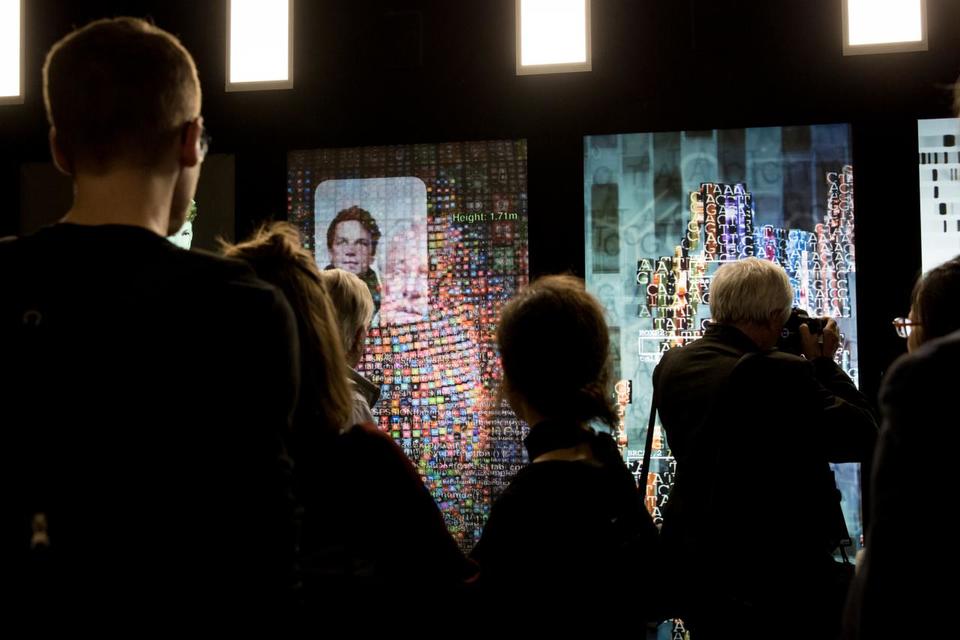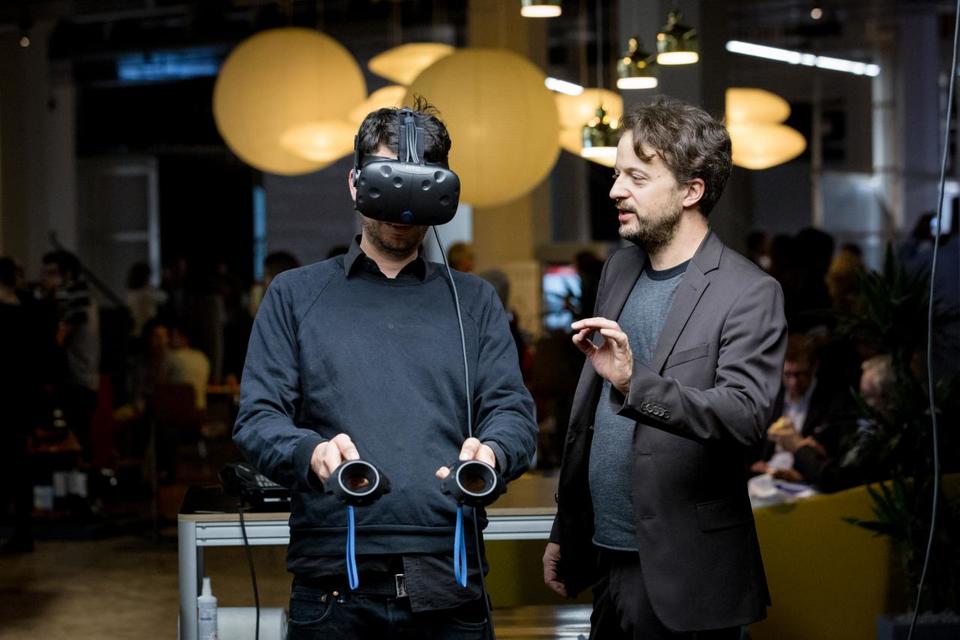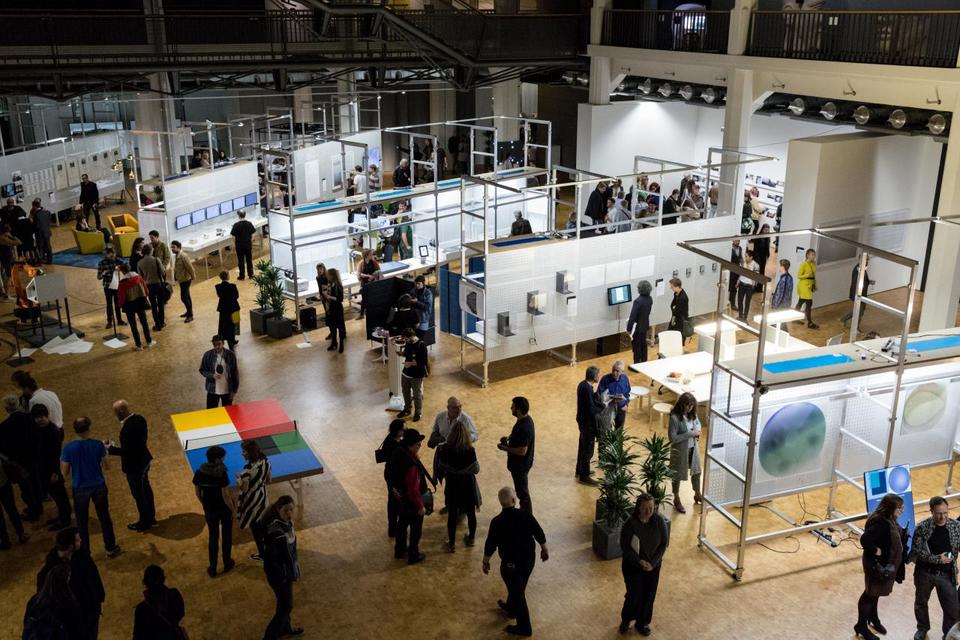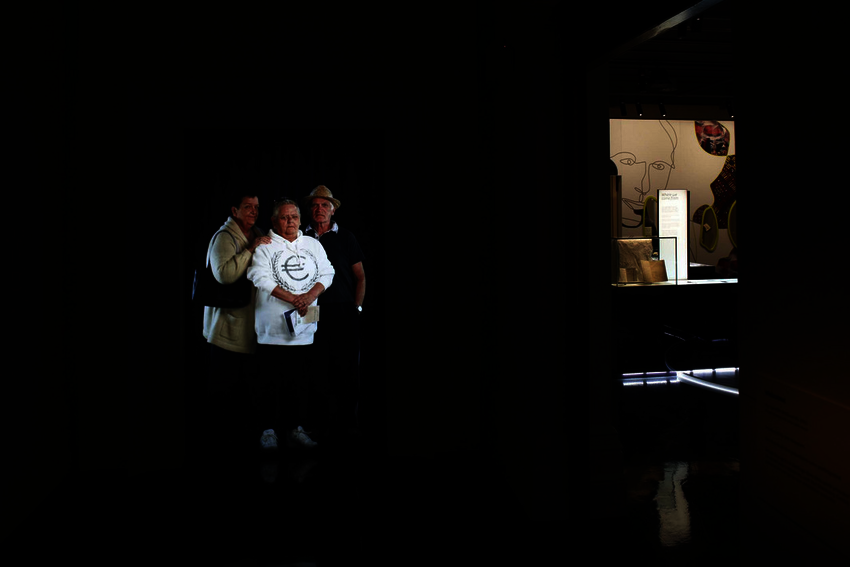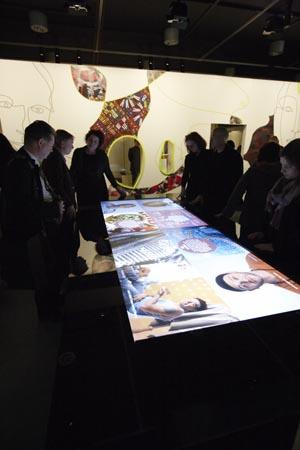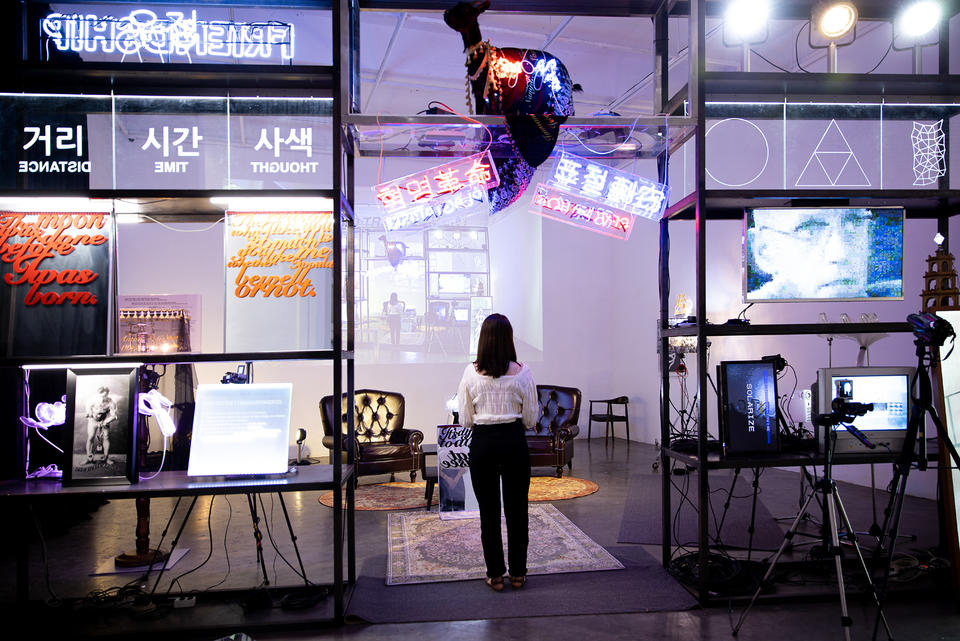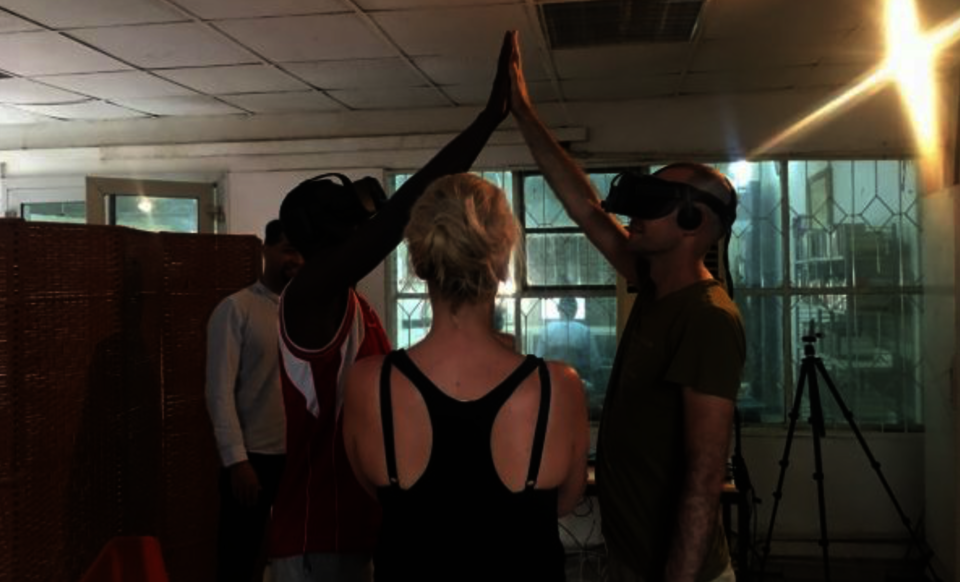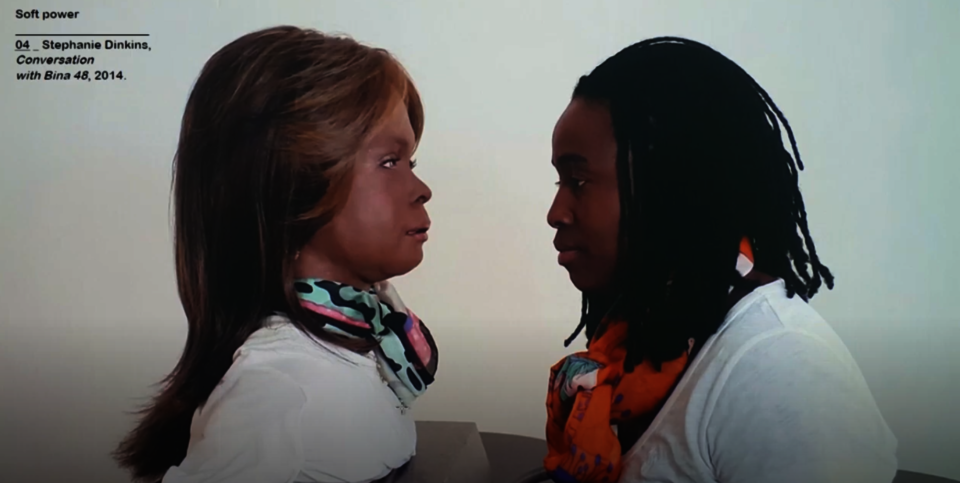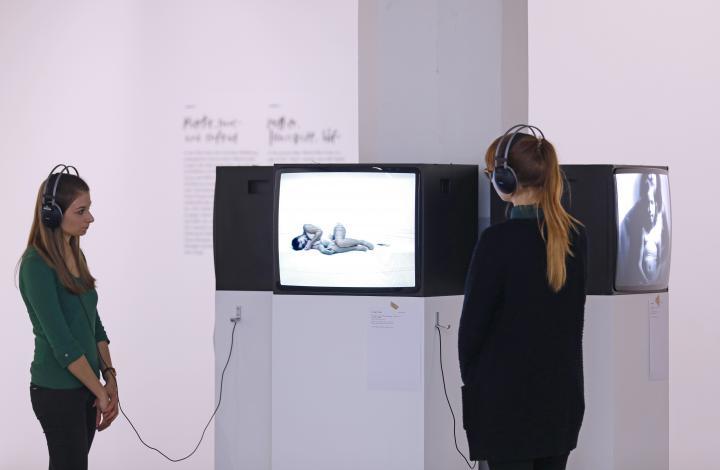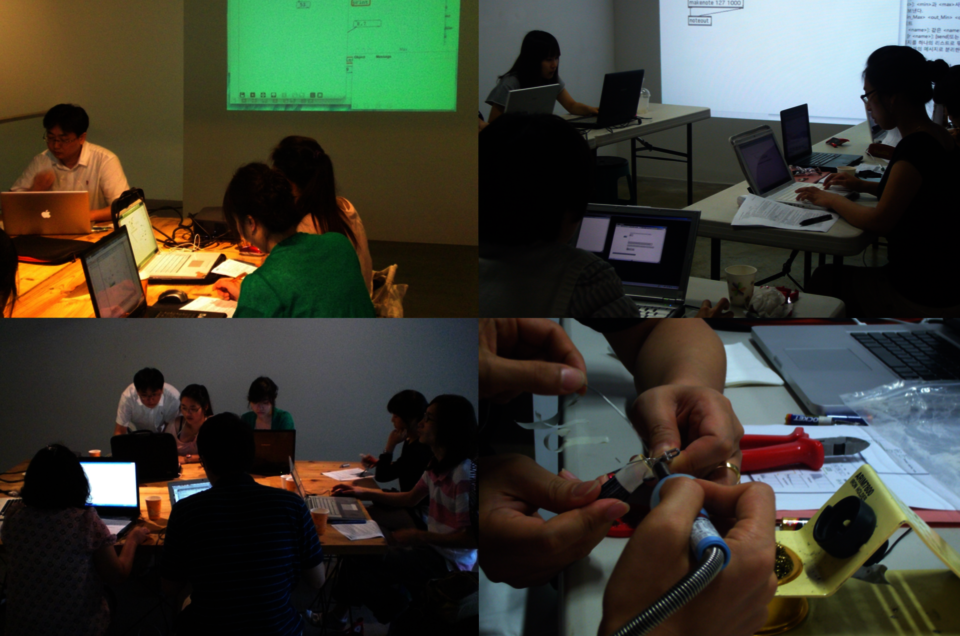ABSTRACT
My research project includes case studies in which I interviewed nine new media art curators and directors whose curatorial practices offer historical analyses and theoretical perspectives that address the dynamics of social justice by using new media art. I investigate the ways in which social justice is presented in museums and arts organizations. Central to this project is an examination of museum practices where the use of new media art becomes a central platform to showcase issues of social justice.
Image
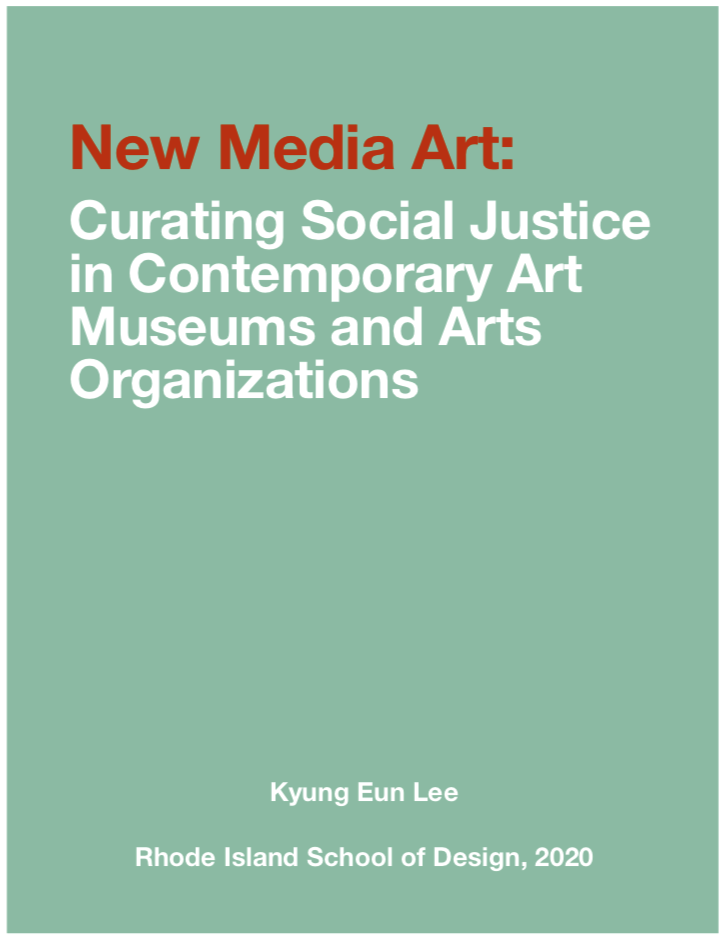
TABLE OF CONTENTS
INTRODUCTION
LITERATURE REVIEW
METHODOLOGY
BODY
RESULTS
-
Social Justice Discourse and Action in Larger Arts Organizations - Focused on the Cases of Images Festival, ZKM|Center for Art and Media, and the Minneapolis Institute of Art
-
Interaction, Participation, and Collaboration Using New Media Art
-
From Engagement to Social Justice and Activism Against Inequity
-
Effectiveness of New Media Art to Focus on Social Justice and Activism Against Inequity
-
Obstacles and Opportunities for Future Developments
-
Future
-
The New Ways of Curating, Contemporary Curating
THE ROLE OF CURATORS AND DIRECTORS IN SOCIAL JUSTICE AND ACTIVISM AGAINST INEQUITY IN MUSEUMS
CASE STUDIES
-
New Media Art Convey A Message Regarding Human Rights–Dominique Moulon Interview
-
The Alternative Visual Culture Factory and the Seoul International New Media Festival - Jen Yeunho Kimjang Interview
-
Media Anatomy and the Dream Blossom Project - Nathalie Boseul Shin Interview
-
Serious Game – Beryl Graham Interview
-
FEMINIST AVANT-GARDE of the 1970s – Philipp Ziegler Interview
CONCLUSION
FURTHER RESEARCH
BIBLIOGRAPHY
APPENDIX -INTERVIEWEES’ BIOGRAPHY
Acknowledgments
I would like to express my deep and sincere gratitude to my thesis advisor, Prof. Andrew Robarts. My completion of this project could not have been accomplished without his support and encouragement.
I cannot express enough thanks to the directors and curators who I interviewed. This project would not be as complete without their support.
My sincere thanks also go to my reader Sarah Ganz Blythe, Deputy Director, Exhibitions, Education & Programs of the RISD Museum. I am extending my thanks to all the staff, tutors, and thesis faculty mentors at the Center for Arts & Language (A&L) and Research & Strategic Partnerships.
I would like to say thanks to my lovely cohorts, Liliane Lai, Holly Gaboriault, Elena Kalkova, and Tiange Li.
I am extremely grateful to my family for their sacrifices, love, and prayers and for educating and supporting me for my future.
Lastly, I would like to say thanks to all the people who have supported me in completing my research.
Robert R. Janes and Coleman S. Laura-Edythe, in Museum Activism
In museums, social justice applies to “access, equity, diversity, inclusion, and the call for action on systemic change and transformation.”
Jennie Carvill Schellenbacher, “Empowering Change: Towards A Definition of The Activist Museum - Museum-id,”
When museums can encourage their audiences to take steps to become more engaged participants, to be more involved in their community, ……to be more educated about how their daily acts might positively impact others, and to be inspired to bring about change, the more important museums can be.
INTRODUCTION
In my thesis, I use the term “new media art”[1] to describe curatorial practices, educational and public programming, and museums' themes that explore new media art created by artists and are concerned with ongoing social issues that face concerns of both today and tomorrow. The use of new media art layers the audiences' experience and opens up opportunities to make museums that are inclusive, diversifying, and decolonizing institutions. I investigate curators and directors’ works through new media art, about sharing, highlighting, and uncovering suppressed voices.
In museums, social justice applies to “access, equity, diversity, inclusion, and the call for action on systemic change and transformation.”[2] In my thesis, I investigate the ways in which social justice is presented in museums and arts organizations. Central to this project is an examination of museum practices where the use of new media art becomes a central platform to showcase issues of social justice and activism. Institutional support of this work within exhibition programming allows not only public exposure to pressing issues; it also opens a space for possible alliances to grow.
My thesis project begins with the assumption that new media art has the potential to engage people and invite collaborative and participatory ways of working. This builds relationships and strengthens networks, thus fostering broader opportunities for social justice and activism against inequity and reframing the historical canons, including questioning masculinity or Euro-U.S.-centrism and engaging in contemporary discourses about gender and LGBTQ+ issues, racism, and sexuality, and the rights of marginalized groups. Specific to this research is an investigation of how curators and directors create diverse and grounded exhibitions regarding activism using new media art as a direct response to a rapidly changing art world and as a way to navigate, foster, and cultivate conversations with the public. I research the great power of curatorial practices to amplify the voices of the marginalized, the call for equal rights, and access for all people.
Furthermore, I also explore the interactive nature of new media interfaces to invite participation and possible collaboration through interpretive programming, whether art educational or public programs (participatory educational activities, presentations, talks, lectures, or workshops, etc.) and exhibitions are necessary to activate that potential to encourage human dignity and global equality.
My intention is that this research supports awareness of contemporary practices and fosters a movement among museum curators and arts organizations professionals to take up the charge of addressing these issues through dynamic programming using new media art. My research project includes case studies in which I interview nine new media art curators and thinkers whose curatorial practices offer historical analyses and theoretical perspectives that address the dynamics of activism by using new media art. I conducted interviews with curators and directors who have expertise in new media art. (I will provide the interviewee’s information in the next section, Biography).
Throughout the interviews, I explored each interviewee’s perspectives, opinions, beliefs, and experiences of specific exhibitions or organizations to which they belong. I also was able to understand their processes behind specific new media art exhibitions, as well as their obstacles in this field and topics they find important. Alongside appreciation of their curatorial strategies, I also acquired a deeper understanding of the concept of social justice, as well as the nature of activism in arts organizations and exhibitions. In addition, I asked interviewees how they employ new media art as a means for supporting activism and the correlation between this art and social justice action. This included discovering whether or not new media art is more effective than other art mediums in supporting social justice and activism. I explored how new media art can engage and interact with people to create more participatory and collaborative experiences and how this may impact the understanding of the social justice landscape.
Museums are celebrated for providing artistic and cultural heritage and collecting artifacts and yet are held accountable for many factors of their operations and their actions as needed. Over time, art museums and arts organizations have developed into inspiring and also controversial institutions that hold significant collections, valuable programs, and innovative events. Twenty-first-century museums not only serve as places for conserving and compiling works and specific collections but also as places that critically act to make their museums reflect the diversity and voices of the people within their exhibitions, events, programs, and collections. As the role of museums has developed to express and reflect its current challenges and complexities, the responsibilities of curators have expanded as well. Today, the curator’s role has expanded in line with the current responsibilities of the twenty-first century requiring constant reflection and questioning about current and future generational social challenges.
Since the 1960s and 1970s, museum curators have explored ways of rethinking and reframing curatorial practices through “curatorial activism.”[3] As “curatorial activists,”[4] curators make efforts and plans to represent different voices and multiple perspectives within the museum. The process of decolonizing the museum conveys recognition, reconfiguration, and exposure of the Eurocentric ideology and biases built within the museum’s concepts and practices. Curators can curate exhibitions that address discrimination, gender, and LGBTQ+ issues, racism and sexuality, and the rights of marginalized groups of people, including women, sexual minorities, children, and disabled people. Their projects sometimes reframe the historical canon or the contemporary art discourse, including questioning masculinity or Euro-U.S.-centrism
Through “curatorial activism,” curators and directors critically act to make their museums and arts organizations inclusive, decolonized, and polyphonic spaces, and the variety of voices of the people within their exhibitions and programs. “Curatorial activists” have actively reframed, rewritten, promoted, and established since the 1960s. Museum directors and curators play a conspicuous role in imagining a future with a more prominent public and promoting different and various ways of thinking about the world.
The scholarly books and articles that I reference support their arguments with numerous examples of contemporary exhibitions and theories that embody the various curatorial strategies, contents, or movements. However, even though the texts and research provide outstanding art programming, curatorial practices have evolved since the 1960s and 1970s. Still, there is insufficient research collected around the views of curators and directors who have led such art museums and created new media art exhibitions regarding these topics. Therefore, I interviewed directors and curators’ perspectives on social justice and activism in museums and arts organizations. Also, I asked how curators and directors reshape their work to address the concerns of future generations and whether museums in the twenty-first century should engage in social justice and activism.
In my thesis, I view museums and arts organizations as places of engaging in social justice and activism. I explore curatorial practices and directors’ works, educational and public planning initiatives, including sharing, highlighting, and uncovering suppressed voices. My focus is on global human rights and social and political struggles, and on works that are about social responsibility. Furthermore, curators and museums employ new media art as a significant method to interact with the public to enlighten them and highlight omitted and silenced voices. Through their practice, they work to design innovative ways to achieve progress and change and foster conversations about ongoing issues.
New media has increasingly impacted our everyday lives, and art institutions have greatly explored new media through their projects, events, programs, and exhibitions. New media is greatly connected with those activist movements. It consists of not only new technologies but also further social actions for engaging in activism, new cultural forms, and providing new twists on familiar political issues. It is hard to describe new media art because of the term "new." The word "new" indicates that there is something new. As a curator, Jon Ippolito states, it is in the essence of new media art to change in terms of “naming, labeling and documenting,”[5] and curators and critics must acknowledge and keep up with change, and even the historical structures of recognizing what is "new" will change.[6] This means, with the rapid pace of technological growth, new media art is an ever-changing genre.
[1]. Video art, film, digital art, digital media, interactive multimedia installations, intermedia, multimedia, interactive art, variable art, upstart media, emerging art, internet art, art and science, art and technology, webcams, computer graphics, computer games, video games, computer animation, art as biotechnology, cyberspace, electronic art, virtual art, computer robotics, 3D printing, photography, lens-based media, digital technology, hypertext, audio technology, CD-ROMs, surveillance technology, GPS systems, wireless telephones, sound art, etc.
[2]. Robert R. Janes and Coleman S. Laura-Edythe, “From the Ground up - Grassroots Social Justice Activism in American Museums,” in Museum Activism (Lieu de publication non identifié: Routledge, 2019), pp. 91-91.
[3]. Lucy Lippard and Maura Reilly, Curatorial Activism. Towards an Ethic of Curation (New York: Thames & Hudson, 2018)).
[4]. Reilly and Lippard, 22.
[5]. IMMA. “New Media Art.” Accessed April 15, 2020
[6]. Ibid.
Image

INTERACTION, PARTICIPATION, AND COLLABORATION
In arts organizations and institutions, new media art has become an integral way to boost engagement and communication within the public and share a wide array of perspectives.
Participatory institutions can share authority with their audiences by interacting with them in-depth, and inclusive museums can break down barriers and produce more participation from audiences.
OPEN CODES:
An Open Learning System
Curators of the ZKM also created “work-stations”-co-working space,
a learning space, and the curators wanted to create more interaction.
Image
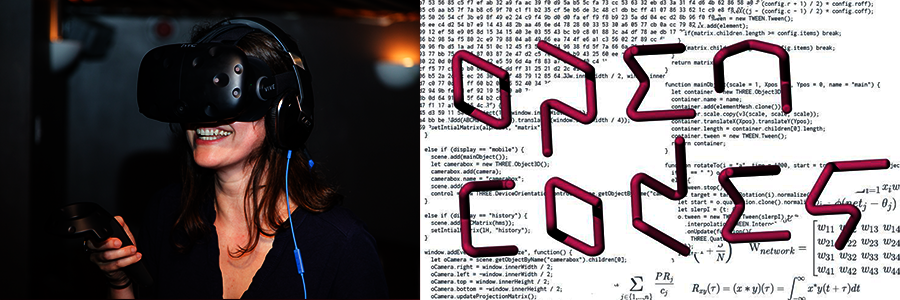
PHILIPP ZIEGLER
(Head of Curatorial Department, ZKM | Center for Art And Media Karlsruhe)
“We at ZKM | Center for Art and Media Karlsruhe define ourselves as a performative museum of participation and interaction, and a major part of our collection is interactive work……how new media has become much more accessible for everybody.”
Philipp Ziegler said,
“It's more an open learning system, as a freehub, a free platform for learning, shared with activists, artists, universities, and companies engaged in this field.”
It rendered the museum as “a university” and open learning space for the audience to discuss all those crucial questions to the community participants.
From Engagement to Social Justice
The exhibition, Identity: yours, mine, ours, was held at the Immigration Museum
in Victoria, Australia.
The exhibition’s theme is “Identity; who we are, who others think we are,
and what it means to belong and not belong in Australia.”
Built a more reflective and broader awareness of important issues by providing an effective,
interactive approach to interacting with prejudice, racism, and identity interactions.
MOYA MCFADZEAN
(Lead Curator of the Exhibition, Identity: yours, mine, ours)
Audiences opened themselves to “attitudinal and behavioral change,” in a positive movement that the museum aims to bring into being through visitor- exhibition activities aimed at impacting on the community.
Image
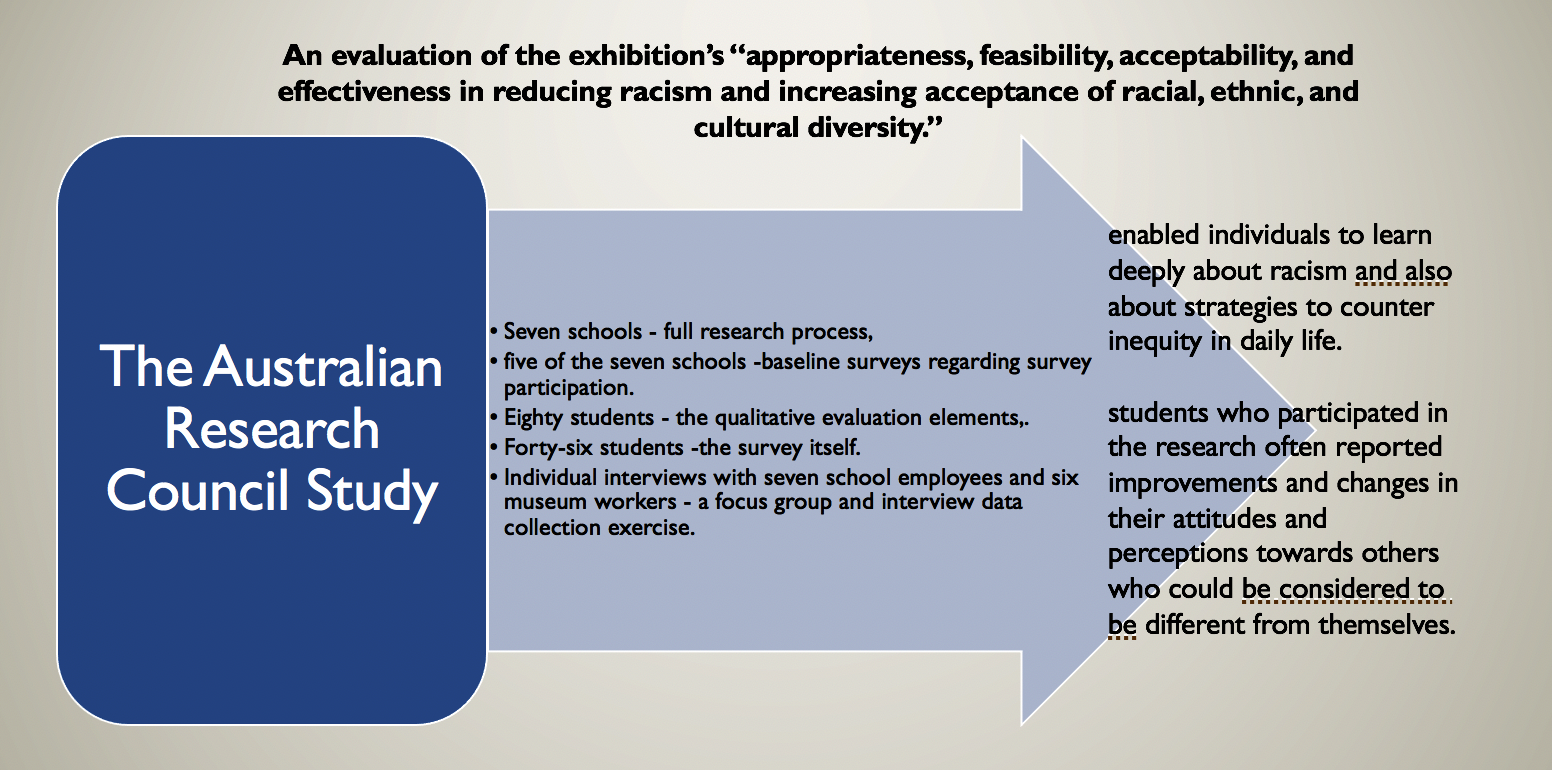
The Seoul International New Media Festival (NeMaf)
Planning projects by selecting artworks that do not contain distortion, hate, or exclusion of social minorities.
NeMaf protects these minorities from the gaze of the non-disabled, adult, white, male.
Introducing new media artworks that rethink art and media while exploring and supporting artists with the potential to believe that anyone can become a new media artist.
Image
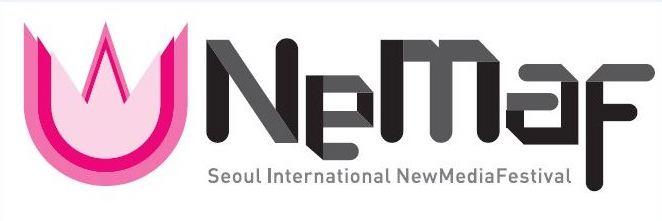
THE 19TH SEOUL INTERNATIONAL NEW MEDIA FESTIVAL,
GENDER X NATION
-
Hopes to bring about a better perspective to nations. we should think more about those people who are alienated from the right to pursue happiness.
-
Nation has not viewed gender in terms of the various spectra beyond the gender dichotomy of male and female.
-
Under the patriarchal system, the terms “femininity” and “masculinity” have been used to restrain and censor the body in diverse ways.
Jen Yeunho Kimjang
(Director of the Seoul International New Media Festival )
“In the system where the existing industrial system is capitalist, the patriarchal, male-centered power system cannot be ignored.”
“It is difficult to change all systems and operations within a few years…….I believe that creating a cultural foundation is an area where time and energy are absolutely necessary. So, I've been doing it consistently for 20 years.”
Image
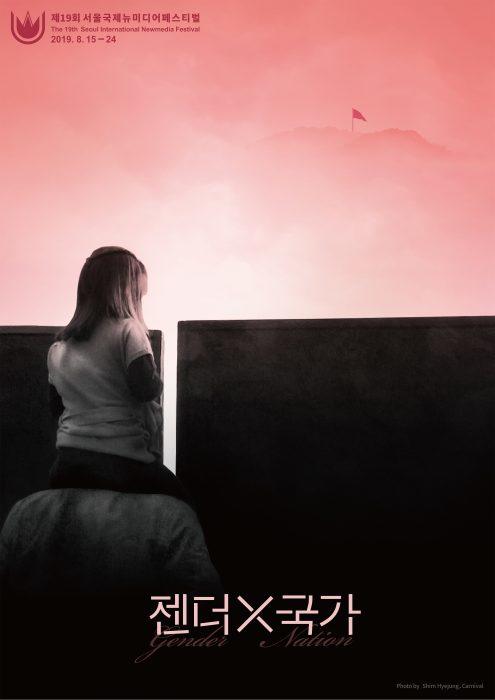
Image

OBSTACLES AND OPPORTUNITIES
FOR FUTURE DEVELOPMENTS
-
Building a Cultural Ecosystem
-
More Accessible to More People, but still Divisive
-
A Lack of New Media Artists Who Focus on The Issues
-
A Need for An Ongoing Mid- to Long-Term Project (However, private art museums have a problem in raising funds )
Image

EFFECTIVENESS OF NEW MEDIA ART TO FOCUS ON
SOCIAL JUSTICE AND ACTIVISM AGAINST INEQUITY
-
Re-shaping new media norms
-
Allows individuals to successfully connect and react to a lived moments and experiences. Successfully eliciting responses helps to galvanize audiences to action when they experience something that leaves them feeling conflicted or emotional, potentially acting as a call to social activism.
-
The potential to be used for social activism and justice through curators' workshops and educational programs
Image

The Role of Curators and Directors in
Social justice and Activism Against Inequity in Museums
-
Curators and directors play a powerful role in how new media artwork is perceived, and what emotions and actions it might elicit, making it a very powerful tool for the social action.
-
It is crucial for curators to carefully consider the ways in which the structures of their programs, the connections and intersections, produce ideas and thoughts that they want to carry to the audience.
-
Curators and directors need to participate in subsequent discussions with members of the public, after experiencing new media pieces, and coordinate the feedback received with audiences and artistic communities.
Image

Image

CONCLUSION
Today, many art organizations and museums are making an effort to decolonize and reframe their institutions' authority from ownership and objectivity to collaboration, transparency, and shared authority. With this positive movement to transform our cultural organizations and institutions into places that encourage awareness and engagement, networks can expand and influence a more diverse public. Inclusive museums can break down barriers and create more engagement with audiences by interacting with them in-depth. Participatory institutions can share authority with their audiences. The involvement of the audience does not immediately result in the sharing of the museum's power, but engagement encourages this more democratic museum process. In these museums and art organizations, degrees of involvement are possible and enables museum professionals to think of participation and inclusion as catalysts to shared authority.
In the twenty-first century, the role of curators and directors has expanded as well, as throughout the world, they foster conversations to help people better understand social justice and address injustices and inequality through their curatorial practices and works. Each of these changes to curatorial practice or public programming supports the initial assertion that curators’ responsibilities have expanded, as they reflect on visions, questions, and challenges faced today and, in the future, and also bring awareness to isolated and silenced voices.
As Sandell and Janes stated, “We submit that museum activism not only requires a willingness on the part of museum workers to exercise moral leadership in support of ethical issues, an openness to collaborative and participatory ways of working, that build relationships and strengthen networks well beyond the museum, thereby supporting broader efforts to bring about change.”[1] When curators and directors utilize new media art effectively as a platform for expanding engagement, the exhibits can cause audiences to reflect on their connectedness and responsibilities to one another within society. This type of engagement will serve as a foundational aspect of advocacy, reflecting the practice of sponsoring dialogue about social justice and social-political issues.
To gather a perspective on this current transformation occurring within museum professionals’ curatorial practice and director’s works in cultural institutions, I began my investigation with a literature review of the definition of the art museums, the roles of art museums, curatorial activism, new media art, and new media art exhibitions. Additionally, I conducted nine interviews with museum professionals and arts organization directors from various countries: Germany, England, Korea, the United States, Canada, and France. Throughout this study, I argue that new media art has the potential to engage people, invite interactive, collaborative, and participatory ways of working, build relationships and strengthen networks, and thus foster broader opportunities for social justice and activism. Those elements were explored and analyzed by means of first-person interviews, literature reviews, and analysis of industry movements and evolving practices. The body was organized into two parts; the results revealed different concepts from interviews and the study of scholarly works of literature. The case studies uncovered curatorial practices and specific works of interviewees.
In the section, Social Justice Discourse and Action in Larger Arts Organizations, the study focused on how new media art organizations and institutions promote creating and strengthening a diverse community. Three case studies were considered in greater depth for this discussion: Images Festival’s mission and vision, Global Art and the Museum at ZKM,and a three-year strategic project called, Museum as Site for Social Action at the Minneapolis Institute of Art. The case studies demonstrated how museums and art organizations evolve as inclusive, decolonized, and polyphonic environments and learn to incorporate the diversity of people's voices within their exhibits and programs.
In the section, Interaction, Participation, and Collaboration Using New Media Art, analysis of interviews with curators and directors revealed an increase in interactive, collaborative, and participatory ways of working through new media art exhibitions and programs to build relationships and strengthen networks. New media art encourages networks that provide audiences opportunities to communicate, interact, and react to a real, lived moment or series of moments. These types of exhibitions and programs allow audiences to forge meaningful bonds with other audiences, as they are inherently social and participatory, providing an immersive, engaging approach to social and political discourse. I explored hands-on museum exhibitions (John Durant’s interview) and the creation of open learning spaces (the exhibition, Open Codes, at ZKM). Sometimes, curators, like Sarah Cook, work with new media in their curatorial practice to provide rich content to audiences outside of galleries and to improve interaction, participation, and collaboration. Curators like Anna Frants, Dominique Moulon, and Beryl Graham include interactive new media art in their exhibitions so that audiences are an integral part of the works, increasing a sense of connectedness and investment in the pieces. It should be noted that these types of non-traditional approaches to audiences have become increasingly important, as the global pandemic has challenged the ways in which people can view or engage with art and museums.
New media art accelerates the potential of curatorial practices to become an alternative source of knowledge development because social issues are discussed in a participatory manner that empowers many voices to be heard simultaneously, defining and providing responses to the challenges facing society. Community participation practices in exhibitions were also found to be a significant factor in enabling museums’ burgeoning roles as facilitators of social justice and activism, and new media art displays were seen as a key component to successfully achieving these goals.
The exhibition, Identity: yours, mine, ours, is an example of a social and ethical engagement exhibition that can expand audiences' political and social imagination and make exhibition spaces double as spaces for social justice. An in-depth study by the Australian Research Council gathered student and instructor narratives, surveys, video journals, and focus group interview outcomes to document the exhibitions' impact. The exhibition’s study showed an evaluation of the exhibition’s “appropriateness, feasibility, acceptability, and effectiveness in reducing racism and increasing acceptance of racial, ethnic, and cultural diversity.”[2] Based on the Australian Research Council report, Identity: yours, mine, ours was able to build a more reflective and broader awareness of important issues by providing an effective, interactive approach to interacting with prejudice, racism, and identity interactions.[3] The research showed that offering audiences with chances to build intimate connections tended to disrupt multi- culturalism's policy narratives by enabling people to think more intensely about what perceptions they held.
New media art offers opportunities for individuals of all ages and backgrounds to connect with a subject through artistic practice and works, bringing home the educational importance of providing either a dialogue created by works or some other form of potential engagement. As Samuel La France stated, “The educational component can be linked to peoples’ interests in social justice and activism,”[4] when curators and directors utilize new media art in their educational programs and workshops. The educational component can be related to the aspirations of people in social justice and advocacy. Therefore, it is important for curators and directors to carefully examine the ways in which their programs' systems, connections, and intersections create ideas and thoughts that they want to present to the audience. The increased effectiveness of new media art in achieving these aims can be seen in the work of new media art workshops (Nathalie Boseul Shin case) and expand the possibility for audiences to learn new media art and awareness of social issues (Jen Yeunho Kimjang case). Nathalie Boseul Shin also claims that the strength of media art is that it is possible to modify the format to suit any location. She stated, “One can put a single DVD in their bag, and then play it on the monitors provided in any exhibit in the exhibition hall or shoot the project onto a large screen.”[5]
In the case study sections, curators’ and directors’ work were examined through interviews with Beryl Graham, Dominique Moulon, Jen Yeunho Kimjang, Nathalie Boseul Shin, and Philipp Ziegler. Questions focused on how the interviewees helped bring about equality in their institutions and what they had found to be successful in making their organizations and institutions more inclusive spaces, including more welcoming approaches to differing physical abilities, ages, and genders.
One of the case studies, Jen Yeunho Kimjang, indicates that Kimjang’s work, IGong demonstrates how new media can reflect art and expand beyond the male gaze to create new types of work and perspectives. It is difficult to change all systems and operations within a few years. Therefore, Kimjang continuously has been accumulated these alternative viewpoints for the last 20 years. My research investigated Kimjang’s three works: the Seoul International New Media Festival: Gender x Nation, the Feminism Video Activist Biennale, and the Feminist Media Artist Workshop. The social justice approach of Kimjang prioritizes changing the male gaze to get more voices into the new media art world.
With the invention of 16mm and 8mm cameras, there has been an increase in artworks in the United States containing more women’s perspectives and gazes through video art. This movement continues into new media art. It means that this art form's main subject has changed, and the art world has changed in such a way that everyone can engage in new media art and create it.[6] Kimjang argues the audience should consider their own presentation and voice in a society that isolates and excludes through the gaze of the adult non-disabled heterosexual male in new media digital culture.
Kimjang’s work is committed to introducing new media artworks that explore innovative applications and inventive ways of rethinking art and culture while discovering and encouraging artists with the desire to imagine that anybody can become a new media artist, even children. Hence, artwork produced using an iPhone or tablet, not expensive tools, is also included in the Seoul International New Media Festival.
There are many examples of contemporary exhibitions and programs dealing with social issues of discrimination and the rights of marginalized groups of people. However, there are not yet many exhibitions and programs that employ new media art to share, highlight, and uncover suppressed voices in a given society. Like my case studies, some curators and directors expand the silence of marginalized groups of people. Professionals reframe or replace Euro-centric discourses and structures with alternative points of view. However, societal and funding barriers still provide challenges to realizing the potential of this medium, and further work is needed. Despite that, new media art offers an impressively effective possibility to take both audience engagement and social discourse to a new level in creative spaces, and its potential is just beginning to be uncovered.
As Nathalie Boseul Shin stated, the planning of the exhibition should be a mid-to-long-term project to speak about social connections through exhibitions.[7] Therefore, she feels that she is more like a producer who plays a part in changing the existing works of art and shaping the directions of artists' new work. Directors of new media art organizations and new media art curators often act as producers because they have reached the stage that they have taken part in the exhibition's production. New media art curators and directors perform as collaborators of the community, rather than collectors, caretakers, and conservators.[8] Curators also mediate the artwork's production and display in physical space between artists and museums, requiring deep collaboration between artists and curators.
Today, the role of directors and curators has expanded to focus on visions, questions, and challenges faced today and, in the future, bring awareness to marginalized and silenced voices by highlighting injustices and inequalities. For both positive and negative purposes, new media art may be used, and the audiences can evoke both positive and negative feelings. Therefore, curators and directors play crucial roles as producers, catalysts, bridge-builders, commissioners, filters, community communicators, collaborators, and activists in interpreting new media artwork. The emotions and actions of their work can provoke a very effective tool for social justice and activism.
Further Research
Research around social justice and activism in museums and arts organizations through new media art exhibitions will continue developing and progressing. Scholarly research thus far offers an important starting point for further study, and the inquiries and considerations presented in this study are but a stepping stone along the path to realizing the full potential of new media art in institutions and society.
New media art exhibitions and programs encouraging social justice and activism have both obstacles and opportunities before them in terms of future growth. As new media art curator Nathalie Boseul Shin argues, there is a need for ongoing initiatives that address social and activist issues, rather than just encouraging audiences to consume the works of art and the technologies that create them.[9] In addition, Jen Yeunho Kimjang argues that ongoing financial support and the development of a national market are urgently needed steps.[10] She argues that artists cannot exclusively produce social issue artwork, but a more balanced approach is needed in order to create a market and cultural ecosystem for the sale of new media artwork. Further research into how and where these types of changes might occur and what possible solutions can be proposed to address situations impeding their implementation would be very useful to the field.
In addition, as Beryl Graham stated, although new media makes things more accessible to more people, there is still a “digital divide” [11] for many people, which limits both organizations’ and individuals’ abilities to access and procure such exhibits. These types of challenges must be researched and better understood before any meaningful resolution to them can be achieved. Such research should also include a deeper analysis of the potentially negative effects of new media artworks and the risks associated with it being employed for extremist political or ethical ideologies. These types of issues might be better navigated by curators and directors after more careful studies of the medium have been conducted.
Lastly, in order to study in more detail whether an exhibition using new media art has the power to realize social justice and activism, various reports such as the Australian Research Council report on Identity: yours, mine, and oursexhibitions are needed. Suggestions for future research are examining and evaluating the feasibility and effectiveness of increasing acceptance of racial, ethnic, and cultural diversity through new media art exhibitions that convey contemporary issues. Furthermore, in the future, there will be more evaluations of new media art exhibitions that question masculinity or Euro-U.S.-centrism and engage in contemporary discourses about gender and LGBTQ+ issues, racism, and sexuality, and the rights of marginalized groups. In this way, further researchers will lead and make concrete more opportunities to expand this research more deeply.
[1]. Robert R. Janes and Richard Sandell, “Posterity Has Arrived,” in, “Museum Activism (Abingdon, Oxon: Routledge, an imprint of the Taylor & Francis Group, 2019),” pp. 1-21.
[2]. Jessica Walton and Yin Paradies, “Identity: Yours, Mine, Ours Exhibition Evaluation Report” (Museum Victoria, April 2106), https://static1.squarespace.com/static/5835166203596ef406c87231/t/59a7544b6f4ca36321b263b0/1504138338606/Identity-Exhibition-ARC-Evaluation-Report-Museum-Victoria-2016.pdf, 7.
[3]. Maya McFadzean et al., “Inside out/Outside In,” in Museum Activism (Abingdon, Oxon: Routledge, an imprint of the Taylor & Francis Group, 2019), pp. 256-267.
[4]. La France, Samuel. Zoom Interview with the author, September 21, 2020.
[5]. Kyungyoon Ho, “[Site+People] Shin Boseul Total Museum of Art Curator,” Daljin Kim Art Institute[Site+People] Shin Boseul Total Museum of Art Curator, accessed July 20, 2020, http://www.daljin.com/column/6090.
[6]. Kimjang, Jen Yeunho. Personal Interview with the author, Seoul, South Korea, August 7, 2020.
[7]. Shin, Nathalie Boseul. Personal Interview with the author, Seoul, South Korea, August 17, 2020.
[8]. Christiane Paul and Sarah Cook, “Immateriality and Its Discontents: An Overview of Main Models and Issues for Curating New Media,” in New Media in the White Cube and Beyond: Curatorial Models for Digital Art (CA: University of California Press, 2008), 32.
[9]. Ibid.
[10]. Ibid.
[11]. Graham, Beryl. Zoom Interview with the author, September 3, 2020.
Image

Further Research
Suggestions for future research are examining and evaluating the feasibility and effectiveness of increasing acceptance of racial, ethnic, and cultural diversity. (e.g., one of my case studies, the Australian Research Council report on Identity: yours, mine, and oursexhibition)
More evaluations of new media art exhibitions that question masculinity or Euro-U.S.-centrism and engage in contemporary discourses.
This research will continue developing and progressing. The inquiries and considerations presented in this study are a steppingstone along the path to realizing the full potential of new media art in institutions and society.
I hope that this research supports awareness of contemporary practices and fosters a movement among museum curators and arts organizations professionals to take up the charge of addressing these issues through curatorial practices and dynamic programming using new media art.
BIBILOGRAPHY
“24/7.” Somerset House, February 24, 2020. https://www.somersethouse.org.uk/whats-on/247.
“About the Exhibition.” Museums Victoria. Accessed November 1, 2020. https://museumsvictoria.com.au/immigrationmuseum/resources/identity/abo ut-the-exhibition/.
“About the Project.” Accessed October 11, 2020. https://zkm.de/en/about-the-project.
“About Us.” Exploratorium, September 24, 2020. https://www.exploratorium.edu/about-us.
“About.” Accessed October 29, 2020. https://www.museumaction.org/about.
Adair, Bill, Benjamin Filene, and Laura Koloski. In Letting Go?: Sharing Historical Authority in a User-Generated World, 13. Philadelphia: The Pew Center for Arts & Heritage, 2011.
Ambrose, Timothy, and Crispin Paine. Museum Basics. London: Routledge, 1997.
American Alliance of Museums. “Curators Take Flight: Four Curators Cast a Wide Eye on the Shifting Landscape for Curatorial Practice.” American Alliance of Museums, January 15, 2020. https://www.aam-us.org/2020/01/08/curators- take-flight-four-curators-cast-a- wide- eye-on-the-shifting-landscape-for- curatorial-practice/.
Arns, Inke. “Interaction, Participation, Networking.” Medien Kunst Netz. Media Art Net, February 15, 2007.
http://www.medienkunstnetz.de/themes/overview_of_media_art/communica tio n/1/.
Art, Total Museum of Contemporary, and Totalmuseum. “Open the Source.” Issuu. Accessed September 28, 2020. https://issuu.com/totalmuseum/docs/2009_openthesource.
“Artist Biography.” Accessed December 1, 2020. https://www.lozano- hemmer.com/bio.php.
The Babraham Institute. October 19, 2017.
https://www.babraham.ac.uk/news/2019/11/chromos-at-zkm-open-codes- exhibition.
Be Another Lab. “The Machine to Be Another.” Accessed October 6, 2020. http://beanotherlab.org/home/work/tmtba/.
Bishop, Claire. Artificial Hells: Participatory Art and the Politics of Spectatorship. London: Verso Books, 2012.
Cammaerts, Bart, and Nico Carpenter. Reclaiming the Media: Communication Rights and Democratic Media Roles. Bristol: Intellect, 2007.
Carvill Schellenbacher, Jennie. “Empowering Change: Towards a Definition of the Activist Museum - Museum-ID,” April 11, 2018. https://museum- id.com/empowering-change-towards-a-definition-of-the-activist-museum/.
Chipangura, Njabulo, and Happinos Marufu. “Museums as Public Forums for 21st Century Societies.” In Museum Activism, 164–73. Abingdon, Oxon: Routledge, an imprint of the Taylor & Francis Group, 2019.
Chung, Yun Shun Susie, Bruno Brulon Soares, and Anna Leshchenko. Defining the Museum of the 21st Century: Evolving Multiculturalism in Museums in the United States. Pairs: President of ICOFOM, 2018.
Cover story, Alice on net. “CoverStory_TAG 1. Interview with Nathalie Boseul Shin (Curator in Chief, Total Museum of Contemporary Art),” July 24, 2009. https://aliceon.tistory .com/1026.
Cook, Sarah. Zoom Interview with author, August 11, 2020.
“Creating the New Museum Definition: over 250 Proposals to Check out!” ICOM. Accessed October 13, 2020. https://icom.museum/en/news/the-museum- definition-the-backbone-of-icom/.
Creswell, John W. and J. David, “The Selection of a Research Approach,” in Research Design: Qualitative, Quantitative, and Mixed Methods Approaches, 3rd Edition (Los Angeles: SAGE Publications, Inc., 2018), 40–59.
Diversified, AuthorMedia. “The Museum Will Not Be Decolonised.” Media Diversified, February 26, 2018. https://mediadiversified.org/2017/11/15/the-museum-will- not-be-decolonised/.
Dominique Moulon (Art Critic and Independent Curator: "The Art of Acting Somewhere Else", 2019. https://youtu.be/x83_wi2i5GU.
Durant, John. Zoom interview with author, October 5, 2020.
Everhart, Morgan, A Women’s Thing, Yassana Croizat-Glazer, Jackie Zimmermann, Farrah Celler, Allison Geller, and Taylor Haacke. “The Link Between Museums and Activism.” A WOMEN'S THING, December 8, 2019. https://awomensthing.org/blog/icom-museum-definition-art-activism/.
“FEMINIST AVANT-GARDE of the 1970s: 18.11.2017 (All Day) to 08.04.2018 (All Day): ZKM.” Accessed October 11, 2020. https://zkm.de/en/exhibition/2017/11/feminist-avant-garde-of-the-1970s.
Frants, Anna. Zoom Interview with Author, September 4, 2020.
Giannini, Tula, and Jonathan P. . Bowen. “Art and Activism at Museums in a Post- Digital World.” In Museums and Digital Culture New Perspectives and Research. Cham: Springer International Publishing, 2019.
Gonzales, Elena. “Welcome, Inclusion, and Sharing Authority.” In Exhibitions for Social Justice, 147–49. London; New York: Routledge, Taylor et Francis Group, 2020.
Graham, Beryl. New Collecting: Exhibiting and Audiences after New Media Art. London: Routledge, 2017.
Graham, Beryl, and Sarah Cook. Rethinking Curating: Art after New Media. Cambridge, MA: The MIT Press, 2015.
Graham, Beryl. Zoom Interview with Author, September 3, 2020.
Heal, Sharon. “Museums in the Age of Intolerance.” In Museum Activism, 208–19. Abingdon, Oxon: Routledge, an imprint of the Taylor & Francis Group, 2019.
Ho, Kyungyoon. “[Site+People] Shin Boseul Total Museum of Art Curator.” Daljin Kim Art Institute [Site+People] Shin Boseul Total Museum of Art Curator. Accessed July 20, 2020. http://www.daljin.com/column/6090.
Hunter, Robert, and Charles Morris. Universal Dictionary of the English Language: a New and Original Work Presenting ... Every Word in the English Language ... and an Exhaustive Encyclopaedia of All the Arts and Sciences. New York: P.F. Collier, 1898.
“Identity.” Accessed November 4, 2020. https://recollections.nma.gov.au/issues/vol_6_no_2/exhibition_reviews/i… y.
IDFA. “IDFA 2014 | Trailer | The Machine to Be Another,” 2014. https://www.youtube.com/watch?v=_Wk489deqAQ.
Janes, Robert R. “The End of Neutrality: A Modest Manifesto,” 2015. https://coalitionofmuseumsforclimatejustice.files.wordpress.com/2017/08…- end-of-neutrality-ilr-article-dec-2015.pdf.
Janes, Robert R., and Coleman S. Laura-Edythe. “From the Ground up - Grassroots Social Justice Activism in American Museums.” In Museum Activism, 91–91. Lieu de publication non identifié: Routledge, 2019.
Janes, Robert R., and Richard Sandell. “Posterity Has Arrived.” Essay. In Museum Activism, 1–21. Abingdon, Oxon: Routledge, an imprint of the Taylor & Francis Group, 2019.
Jaunts, Artful. “Rafael Lozano-Hemmer on Making Big Installations Safe for Social Distancing.” Artful Jaunts. Accessed December 1, 2020. https://www.artfuljaunts.com/magazine/rafael-lozanohemmer-on-making-big- installations-safe-for-social-distancing.
Kimjang, Jen Yeunho, Personal Interview with Author. Seoul, South Korea, August 7, 2020.
Kimjang, Jen Yeunho. The 19th Seoul International NewMedia Festival: Gender X Nation. Seoul, South Korea: iGong: Alternative Visual Culture Factory, 2019.
La France, Samuel. Zoom Interview with author, September 21, 2020.
Lippard, Lucy, and Maura Reilly. Curatorial Activism, Towards an Ethic of Curation. New York: Thames & Hudson, 2018.
Lucia, Alice L. Conklin, Steven Conn, Denise Y. Ho, Barbara Kirshenblatt- Gimblett, and Samuel J. Redman. “AHR Conversation: Museums, History, and the Public in a Global Age.” The American Historical Review, December 2019. https://doi.org/10.1093/ahr/rhz1189.
“Media Anatomy Seoul.” totalmuseum. Accessed September 30, 2020. http://totalmuseum.org/exhibition/current-exhibition/media-anatomy/.
Manovich, Lev. The language of new media. Cambridge, Mass: MIT Press. 2001. Marstine, Janet. The Routledge Companion to Museum Ethics: Redefining Ethics for the
Twenty-First Century Museum. London: Routledge, 2011.
MASS Action. 2017 Convening Images. 2017. https://www.museumaction.org/2017- convening-images-1
“MASS Action.” Accessed October 29, 2020. https://www.museumaction.org/.
McFadzean, Moya, Liza Dale-Hallett, Tatiana Mauri, and Kimberley Moulton. “Inside out/Outside In.” In Museum Activism, 256–67. Abingdon, Oxon: Routledge, an imprint of the Taylor & Francis Group, 2019.
McLeod, Kate. “The Role Museums Play in Social Activism.” Americans for the Arts, May 15, 2019. https://www.americansforthearts.org/2019/05/15/the-role- museums-play-in-social-activism.
The Minneapolis Institute of Art. “Museum as Site for Social Action: MASS Action.” Resources-MASS Action, 2017. https://static1.squarespace.com/static/58fa685dff7c50f78be5f2b2/t/59dcd… d5b5a1b51d9d8/1507646780650/TOOLKIT_10_2017.pdf.
“MIT Museum.” About | MIT Museum, n.d. https://mitmuseum.mit.edu/about.
Moulon, Dominique. Zoom Interview with author, September 7, 2020.
Mooc Digital Paris. “FANY CORRALMUSIQUES ET CULTURES QUEERJUIN 2019.” mooc digital Paris, 2019. https://moocdigital.paris/cours/musiques-cultures- queer/musiques-electroniques-une-revolution.
Muñiz-Reed, Ivan. “Issues.” Accessed October 30, 2020. https://www.on- curating.org/issue-35-reader/thoughts-on-curatorial-practices-in-the-decolonial- turn.html.
“Museum Definition.” ICOM, https://icom.museum/en/resources/standards- guidelines/museum- definition/
Neuendorf, Henri. “Art Demystified: What Is the Role of the Curator?,” November 10, 2016. https://news.artnet.com/art-world/art-demystified-curators-741806.
Newell, Jennifer, Libby Robin, and Kirsten Wehner. Curating the Future: Museums, Communities and Climate Change. Milton Park, Abingdon, Oxon: Routledge, 2017.
“New Media Activism Reflections Seen in the Light of Communication for Development.” New Media Activism RSS. Accessed October 13, 2020. https://wpmu.mah.se/nmict122group5/understanding-new-media- presentation/understanding-new-media-activism/.
“New Media Art.” IMMA. Accessed April 15, 2020. https://imma.ie/what-isart/series- 1- 1970now/new-media-art/.
Ngulube, Patrick. Handbook of Research on Advocacy, Promotion, and Public Programming for Memory Institutions. Hershey, Pennsylvania (701 E. Chocolate Avenue, Hershey, Pennsylvania, 17033, USA): IGI Global, 2019.
Park, Bokyung. “Awakening the Criticism of the Audience, a Curator Specializing in Media Art,” September 19, 2015. http://inews.ewha.ac.kr/news/articleView.html?idxno=19460.
Paul, Christiane, and Sarah Cook. “Immateriality and Its Discontents: An Overview of Main Models and Issues for Curating New Media.” Essay. In New Media in the White Cube and Beyond: Curatorial Models for Digital Art. CA: University of California Press, 2008.
Patrick Dilley, “Conducting Successful Interviews: Tips for Intrepid Research.” Theory Into Practice 39, no. 3 (Summer 2000).
The Personal is Political. Accessed October 15, 2020. http://faculty.uml.edu/sgallagher/Williams.htm.
Shin, Nathalie Boseul. Personal Interview with author, Seoul, South Korea, August 17, 2020.
Shoenberger, Elisa. “What Does It Mean to Decolonize a Museum?,” October 1, 2020. https://www.museumnext.com/article/what-does-it-mean-to-decolonize-a- museum/.
“Should Museums Be Activists?,” August 18, 2020. https://www.museumnext.com/article/should-museums-be-activists/.
Simmons, John E. Museums: A History. Lanham, Md: Rowman and Littlefield Publishers, 2016.
Smith, Terry, Okwui Enwezor, and Nancy Condee. Antinomies of Art and Culture: Modernity,Postmodernity, Contemporaneity. Durham: Duke University Press, 2008.
Stoppard, Lou. “Everyone's a Curator Now.” The New York Times. The New York Times, March 3, 2020. https://www.nytimes.com/2020/03/03/style/curate- buzzword.html.
Taylor, Johanna K. The Art Museum Redefined: Power, Opportunity, and Community Engagement. Cham, Switzerland: palgrave macmillan, 2020.
Total Museum of Contemporary Art. Digital Playground 2008: Hack the City!! Seoul, S outh Korea: Noh Joon Eui, 2008.
Total Museum of Contemporary Art. “Total Museum of Contemporary Art.” Accessed September 28, 2020. http://blog.naver.com/PostView.nhn?blogId=totalmuseum.
Tribe, Mark, Jana Reena, and Uta Grosenick. New Media Art. Köln: Taschen, 2007.
Vainshtein, Annie. The Exploratorium at Pier 15 on San Francisco’s
Embarcadero. 2020. Datebook. https://datebook.sfchronicle.com/art-exhibits/at- exploratorium-layoffs-furloughs-to-affect-85-of-staff.
Viso, Olga. “Decolonizing the Art Museum: The Next Wave,” May 1, 2018. https://www.nytimes.com/2018/05/01/opinion/decolonizing-art- museums.html.
Wajid, Sara, and Rachael Minott. “Detoxing and Decolonising Museums.” In Museum Activism, 25–35. Abingdon, Oxon: Routledge, an imprint of the Taylor & Francis Group, 2019.
Walton, Jessica, and Yin Paradies. “Identity: Yours, Mine, Ours Exhibition Evaluation Report.” Museum Victoria, April 2106. https://static1.squarespace.com/static/5835166203596ef406c87231/t/59a75… ca36321b263b0/1504138338606/Identity-Exhibition-ARC-Evaluation-Report- Museum-Victoria-2016.pdf.
Weibel, Peter, Andrea Buddensieg, and Rasheed Araeen. Contemporary Art and the Museum: A Global Perspective. Ostfildern: Hatje Cantz, 2007.
Young, Tara Reddy. So You Want to Work in a Museum? Lanham: Rowman & Littlefield, 2019.
Ziegler, Philipp. Zoom Interview with author, September 3, 2020.
Zingerle, Andreas. Opening Museums - New Interaction Methods for Future Museum
Experiences. Lulu Com, 2012.
ZKM | Center for Art and Media Karlsruhe. Open Codes Brochure. Karlsruhe, Germany, 2017. https://zkm.de/en/publication/open-codes-leben-in-digitalen-welten- englisch.
ZKM | Center for Art and Media. 2017. https://zkm.de/en/exhibition/2017/10/open- codes.

